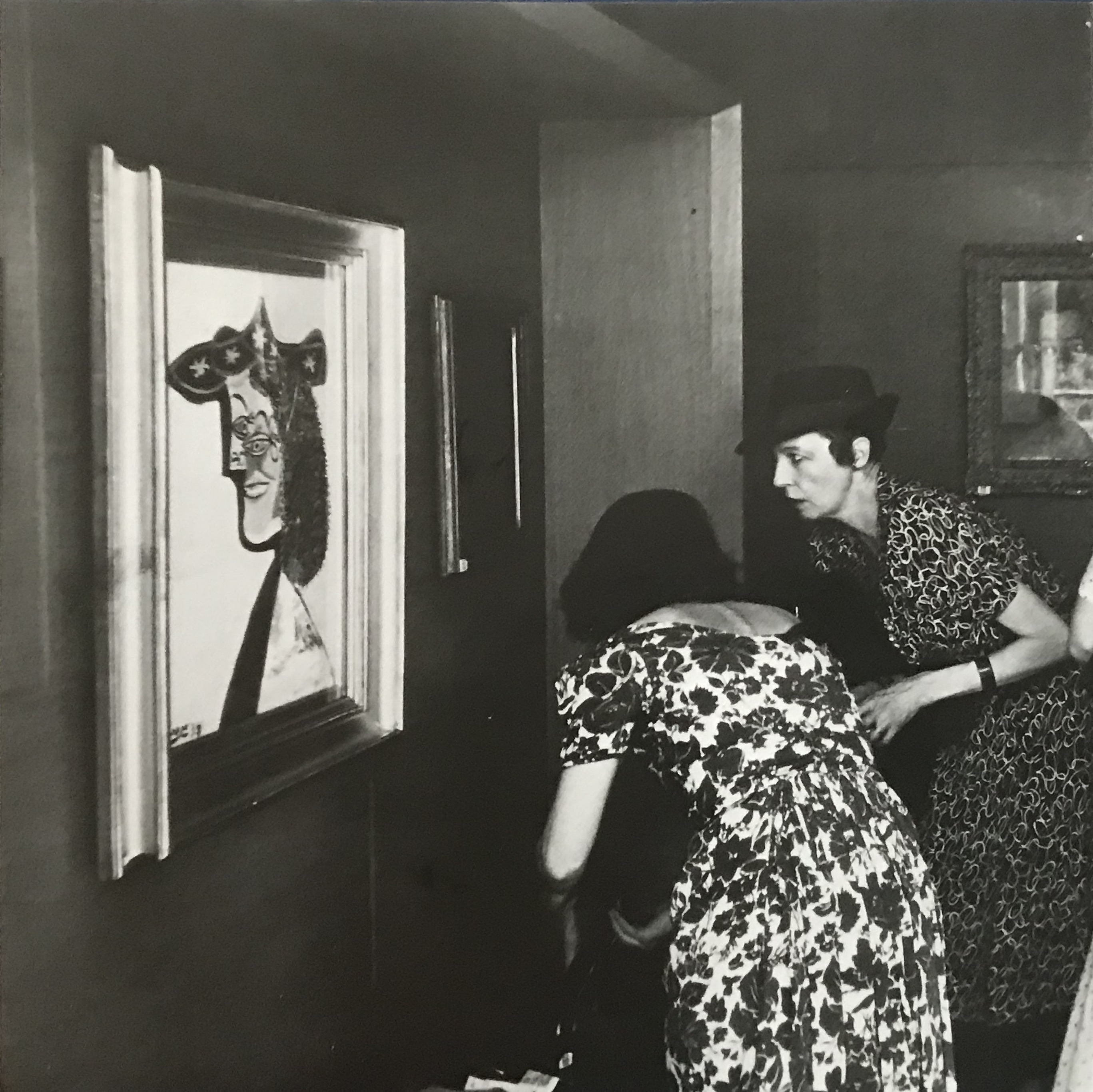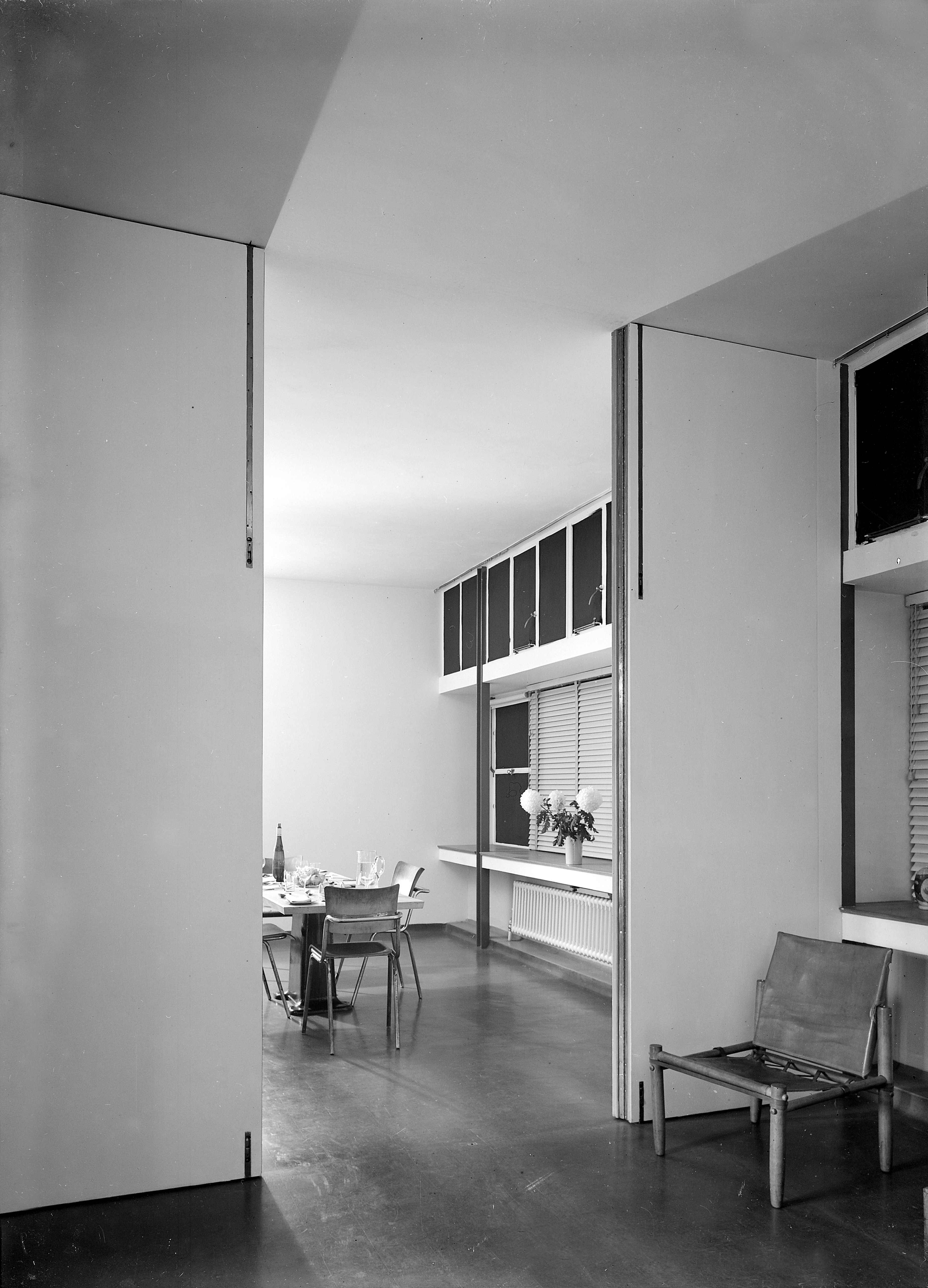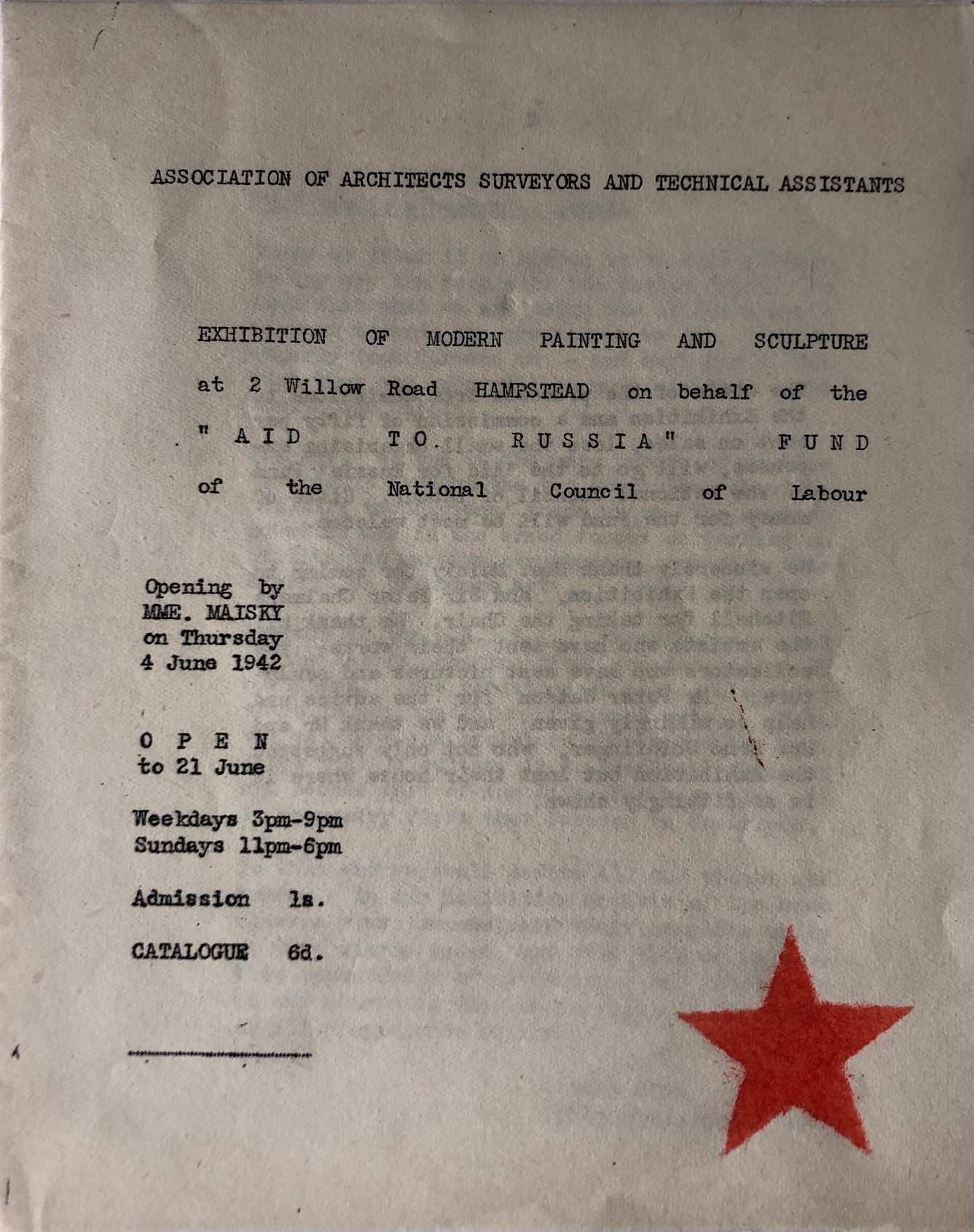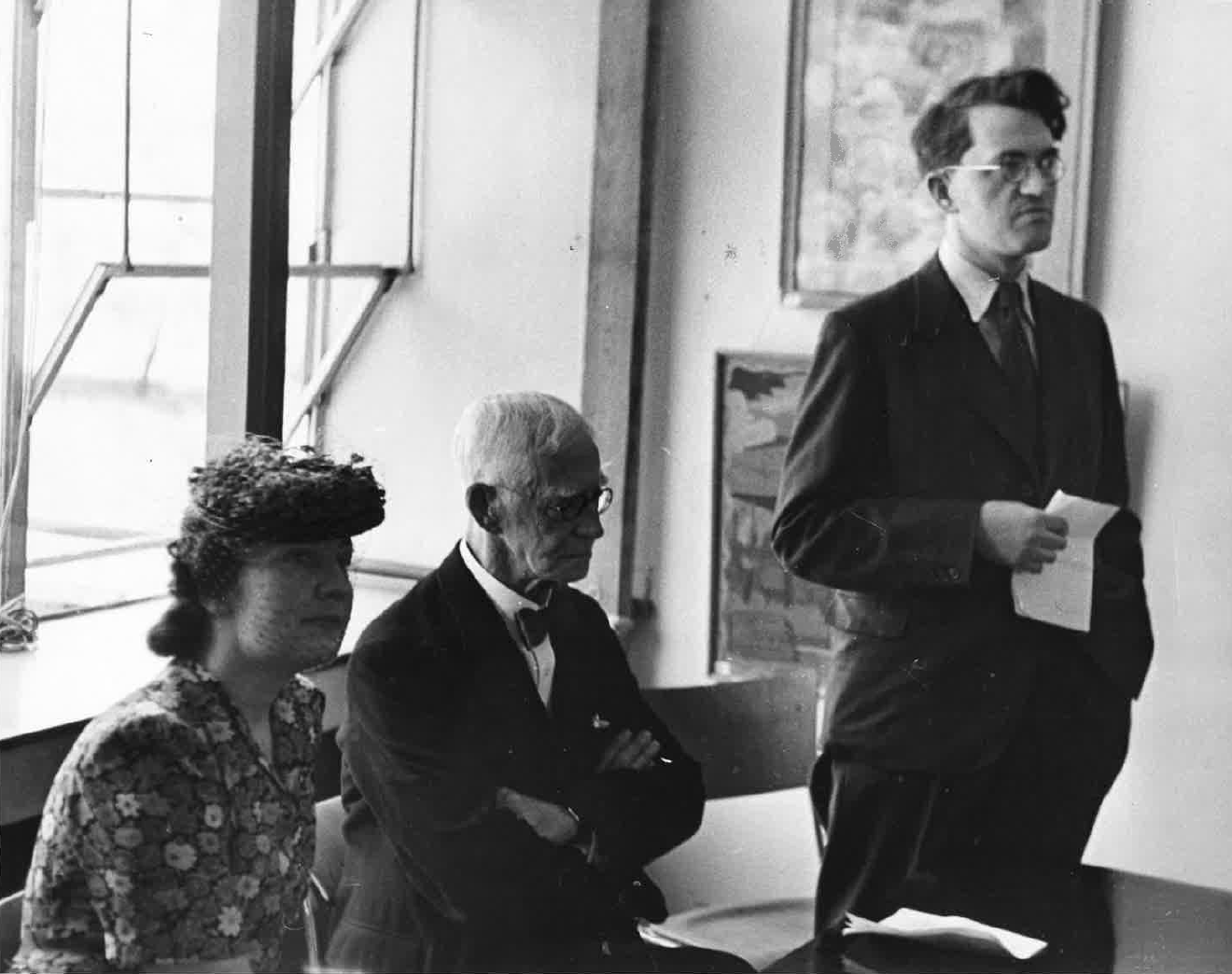Archive
Aid to Russia
- Aid to Russia
Word Count: 3
- Exhibition
- 05-06-1942
- 21-06-1942
The Aid to Russia exhibition was organised in 1942 by the emigré architect Ernö Goldfinger and his wife, the painter Ursula Goldfinger, at their house in Hampstead.
Word Count: 26

Aid to Russia exhibition at 2 Willow Road, 1942, with Pablo Picasso’s La Niçoise, 1937 – today known as the portrait of Nusch Eluard. On the right: Nancy Cunard (Archive 2 Willow Road, National Trust Collections. With kind permission of the Goldfinger Family. © Ernö Goldfinger). 
Goldfinger House, 2 Willow Road, London Hampstead, site of the Aid for Russia exhibition, 1942 (Photo: Mareike Hetschold/Sonja Hull, 2017). 
Ernö Goldfinger, 2 Willow Road, Hampstead, 1939, interior, dining room, photo: Dell & Wainwright (Architectural Press Archive / RIBA Collections, RIBA8557). The flexible floor plan by means of mobile walls allowed variable use of space for social occasions but also for exhibitions such as Aid to Russia in 1942. 
Catalogue of the Aid to Russia exhibition, 1942 (Archive 2 Willow Road, National Trust Collections. With kind permission of the Goldfinger Family. © Ernö Goldfinger). 
Aid to Russia exhibition in 2 Willow Road, 1942, Opening (Archive 2 Willow Road, National Trust Collections. With kind permission of the Goldfinger Family. © Ernö Goldfinger). Anonymous. “Pictures in Aid for Russia.” The Manchester Guardian, 8 June 1942, p. 4.
Gordon, Jan. “Art and Artists.” The Observer, 7 June 1942, p. 2.
Parkin, Michela. “The Goldfinger Collection. Hampstead’s Modernist heritage.” Apollo, 141/398, April 1995, pp. 45–49.
Pezzini, Barbara. “‘For an appreciation of art and architecture’. The Goldfinger Collection at 2 Willow Road.” Apollo, 153/470, 2001, pp. 55–59.
Warburton, Nigel. Ernö Goldfinger. The Life of an Architect. Routledge, 2003.
Word Count: 59
Archive 2 Willow Road, National Trust Collections, London.
Architectural Press Archive / RIBA Collections.
Word Count: 12
My deepest thanks go to the Archive 2 Willow Road, National Trust Collections and the Goldfinger family for giving me permission to reproduce the images of the Aid to Russia exhibition.
Word Count: 30
2 Willow Road, Hampstead, London.
- London
- Burcu Dogramaci. "Aid to Russia." METROMOD Archive, 2021, https://archive.metromod.net/viewer.p/69/1470/object/5141-7568505, last modified: 27-04-2021.
-
Edith Tudor-HartPhotographerLondon
The Viennese photographer Edith Tudor-Hart emigrated to England in 1933 and made a name with her photographs focusing on questions of class, social exclusion and the lives of marginalised people.
Word Count: 29
Anna FreudPsychoanalystLondonThe psychoanalyst Anna Freud and her partner Dorothy Burlingham-Tiffany opened the War Nursery research and care facility in Hampstead in January 1941 under the impact of the bombing of London.
Word Count: 29
Kurt SchwittersArtistPoetLondonThe artist and poet Kurt Schwitters lived in London between 1941 and 1945, where he stood in contact to émigré and local artists, before moving to the Lake District.
Word Count: 27
Golders Green CrematoriumCrematoriumLondonNumerous emigrants were cremated in Golders Green Crematorium after their death, including the gallerist Alfred Flechtheim, the psychoanalyst Anna Freud, the architect Ernö Goldfinger and the art historian Rosa Schapire.
Word Count: 30